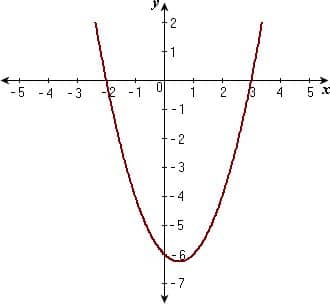Quadratic Functions can be expressed in Standard Form or Vertex Form. There are pros and cons of each form, but they both reveal valuable information about the quadratic function. Use this guide to understand how to use the information in the Standard and Vertex Forms of quadratic equations to create accurate graphs.
Need Help?
Get your personalized success plan today.
Contact us to hire a tutor to help you choose and prep for these exams.
Quadratic Functions: Standard and Vertex Forms
When learning about quadratic functions in math and science class, you will be expected to understand both the standard and vertex forms.
From this free pdf guide you will learn:
- the differences between the Standard Form and Vertex Form equations
- when you should Complete the Square
- how to determine the characteristics of the parabola, such as its shape, its x-intercepts and y-intercepts, if it opens up or down, its highest/lowest point (vertex), and its axis of symmetry
- how to determine the domain and range of the graph
Click here to access the guide comparing the Standard and Vertex Forms of Quadratic Functions.
For help with challenging quadratic equations, check out our YouTube video tutorial for Factoring Quadratic Equations with Leading Coefficients. Factoring quadratic equations gives the x-intercepts. The leading coefficient (the constant in front of the x^2) helps determine the slope and direction of the parabola. But, factoring quadratic equations with leading coefficients other than 1 can be challenging. Check out our Multiply -> Criss-Cross -> Divide method to factor quadratic equations with leading coefficients in the following YouTube video.
WorldWise Tutoring provides services to students of all ages and all abilities in all subjects. Our mission is to provide quality instruction that is deliberately intertwined with learning and life skills so that our students grow into confident and independent lifelong learners who become competent and conscious leaders. Our highly educated and experienced tutors provide effective lessons that can be in-person or online, individual or small group, and cover a multitude of subjects in one session.



